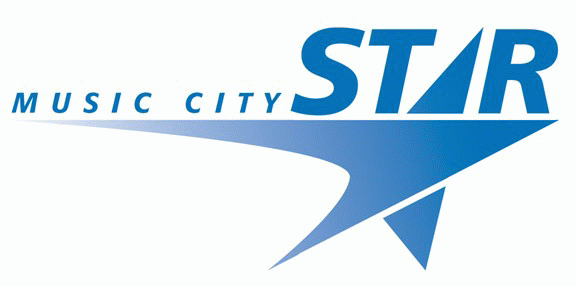
Light Rail Now! can be contacted at: Light Rail Progress |
More and more US cities are finding various forms of regional passenger rail – so-called "commuter
rail – a viable option, under the right circumstances, for introducing rail transit service on a relatively
low budget ... and Nashville, Tennessee is a case in point. Beginning this past November, workers started
re-laying about 80,000 feet of track as part of the rehabilitation and infrastructure improvements needed to
implement a 32-mile, Nashville-to-Lebanon "commuter rail" line. More trackwork is expected to take place
within the next two months.
While, as a "heavy" intercity-type railroad project, this is certainly not "light rail", the Nashville project does suggest what can be done on a tight budget with a "can-do" attitude
and a determined approach to minimizing design and containing costs. At a budgeted cost of $39 million for the 32-mile line, including infrastructure rehab, stations, maintenance
facilities, and rolling stock (including minor renovation), this rail project is about as bare-bones as they come
(about $1.2 million per mile), and the Regional Transportation Authority (RTA) is taking pains to keep costs
contained. Known officially as the East Corridor Alignment (it heads almost due east from Nashville), it's a
single-track line (with a passing siding at one station), owned by the Nashville and Eastern Railroad
Authority, that will share operation with freight trains. The project includes track rehab with 110-lb rail;
installation of 6 very rudimentary stations; and sharing of a maintenance facility with the current freight operator. (See map below.)
As noted above, 6 stations are planned: Lebanon, Martha, Mt. Juliet, Hermitage, Donelson, and
Nashville Riverfront Park (see map above). These are designed and budgeted to be very rudimentary; with little more than
fencing and lighting, and no restrooms except at the terminus. Some "kiss & ride" (passenger drop-off) and
park & ride options will be provided; in addition, there will be provision for connecting bus access. The
stations will also include ticket vending machines (TVMs), and bike lockers are envisioned for the future.
Trains will operate between Nashville's Riverfront Park and the exurban community of Lebanon. Starting at
06:25, two inbound trains (06:25, 06:55) will leave each morning from Lebanon, and one will leave from Mt. Juliet
at 08:04, arriving in Nashville between 07:17 and 08:32. in the evening, trains will leave Nashville at 16:35,
17:15, and 17:50, arriving in Mt. Juliet at 17:03, 17:43, and 18:18, with two trains proceeding on to
Lebanon and arriving at 18:07 and 18:42. Taking 52 minutes for the trip, average speed calculates to about
37 mph – definitely competitive with peak-hour traffic. Ridership on the rail service, dubbed the "Music
City Star", is projected at about 1,350 rider-trips in its first year of operation, increasing to about 1,500 in its
second year.
According to a report in the Nashville City Paper, RTA projects annual operation and maintenance
costs to be just under $3 million (2006). Fares range from $3.00 to $4.00, depending on station –
producing projected revenues a bit over $1 million; thus, an operating deficit of about $1.9 million is
projected. Plans are that subsidies from federal, state, and local governments will cover that deficit,
with $750,000 in subsidies from the federal government, $456,000 from the state of
Tennessee, and $714,000 from local governments.
Integration with existing bus services is deemed essential for the success of the system. Thus the Riverfront
Station, as well as the Donelson and Hermitage stations, will be integrated into Nashville's Metropolitan
Transit Authority bus system, with timed-transfer connections provided for commuters headed to other
destinations in Davidson County. The Music City Star fare structure will include this integration with the MTA bus
system.
The ultra-low-budget starter line project is envisioned as a "foot in the door" for "other-than-bus" transit, and
the hope is that commuters, and the public in general, will be sufficiently impressed to vote in the near future for more funding for
longer-term operation and expansion of the system. Four other corridors are ultimately planned, resulting in
a 145-mile network. Proposed corridors include the Northeast Corridor, serving the
communities of Gallatin and Hendersonville; the Southeast Corridor, with service to Murfreesboro, Smyrna,
and LaVergne; the South Corridor, covering the communities of Franklin and Brentwood; and the West
Corridor, serving Kingston Springs and Bellevue. (See map, below.)
Light Rail Now! website |
|
|
|